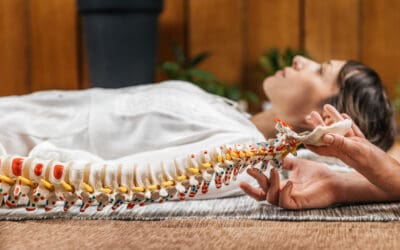What you’ll find about Poor Posture in this article:
• What can be considered “bad” or “poor posture”;
• Tips on how to alleviate muscle pain caused by poor sitting and standing habits;
• What are the effects and risks of having a poor posture;
• Ways to fully heal from poor posture.
At BCWNYC we constantly work to help our patients and readers get to know their bodies’ necessities and improve their overall health. Whether by physical treatments or through our posts, we’re glad to see you smiling, living a pleasant life without any form of pain or trouble; especially today, we hope to help you reach a great posture.
We hope you enjoy the read!
What can be considered “bad” or “poor” posture after all?
First, we have to understand what posture, in fact, is. Despite not being present in every conversation over the topic, there are two terms to define our way to stand: “dynamic posture” and “static posture”.
Static posture is when we are simply not moving; in other words, lying down, sitting, or just standing. In these positions, the body’s muscles try to get comfortable and adequate in a way they can resist gravity. Then, since each of us has different muscle structures, daily habits, and physical strength, our bodies also have a distinct way to understand what is appropriate and how to stand. It ends up we have different postures to deal with similar, yet different, daily situations.
Dynamic posture is when we are constantly moving: actions in which our bodies demand distinct strength in every step of the activity, like jumping, rolling, running, working out, etc.
Each dynamic action requires a different amount of effort, so our bodies have to create multiple habits to deal with them not to get hurt. However, sometimes the amount of strength needed isn’t constant in every step of an exercise: once, we run as fast as we can, and, next, we extend the right leg more, then an arm but loosen the lower part of the body. After that, we force the abdomen and the neck, and so on. In situations like these, very common in sports, there is a higher chance we end up harming our muscles since we might miss attempting the correct amount of strength. One of the best ways to avoid it is by dynamic stretching the muscles before exercising.
Simply put, and back to defining posture: we can say that “good posture” is a healthy way to “set” the muscles while performing actions or “doing nothing”.
Poor/Bad posture, on the other hand, are harmful ways of supporting the body and should be avoided so that no injuries occur.
How to alleviate muscle pain caused by poor sitting and standing habits?

If you are going through a lifestyle change, have to spend more time at home, have less active time, and spend more hours in front of a computer or smartphone, don’t be worry: it is almost everyone’s reality right now. Under this situation, however, some not very common conditions end up being recurrent in our lives, such as slouching in a chair, standing with a flat back, or hunching over for a long time. All these ways to hold the back, shoulders, and neck are harmful if frequent as they will begin to affect the central part of our body: the spine.
If you are experiencing back pain, especially in the lower back, shoulders, or even severe headaches, you’ve faced clear signs that your spine needs adjustment.
The best alternatives to treat pain caused by poor posture depend on how long these pains arose. If it’s recent and still not recurrent or severe, but once a week you’ve been feeling discomfort, it’s time to practice exercises to correct your posture and stretch every day, even if you’re not exercising.
If the pain is more frequent (once every two or three days), or even every day, you should look for a professional that can take care of your spine. Who would such a professional be? There are two possibilities: a chiropractor or an orthopedic doctor.
Both are graduates and undergo extensive training, but the way they approach the solution is completely different. The chiropractor knows techniques to perform spinal alignment, either manually or with the aid of new tools, as less invasively as possible. Orthopedists, on the other hand, rely on prescriptive medicines, exams, and surgeries to heal their patients’ backs.
Both methodologies are valid, so you just have to choose the alternative you trust better and are comfortable with: a physical treatment, drug-free, and 100% naturally performed; the other one consists in taking anti-inflammatory medicines in simple cases, and it is recommended to be assisted by a physiotherapist; surgeries may be requested in more severe cases as well.
What are the effects of holding a poor posture?
The first signs are multiple forms of pain, such as back pain, other body aches, muscle fatigue, and headaches and migraines.
If the poor posture persists for a long time, rounded shoulders, potbelly, and severe neck and back pain will arise. Loss of motor coordination and mobility is also common in the long term.
If you are suffering from any of these symptoms, look for a professional who can treat you and avoid reaching an alarming state.
Will I fully heal from poor posture?
Honestly: not really, unfortunately. You’ll likely get rid of all the pain, inflammation and enable your body to function better by receiving chiropractic care or getting treated by an orthopedist.
However, if you’re not changing habits and start monitoring yourself, the bad posture may come back; once you’ve faced problems with it, your body may understand again those forms to hold is OK, and go back to hunch, bend and ache.
That means, regardless of the treatment you go under, you will have to monitor your posture, exercise, change your lifestyle and strengthen your body to be 100% sure it’s not happening ever again.
“The price of a healthy column is eternal vigilance.”
Someone said something similar someday…



